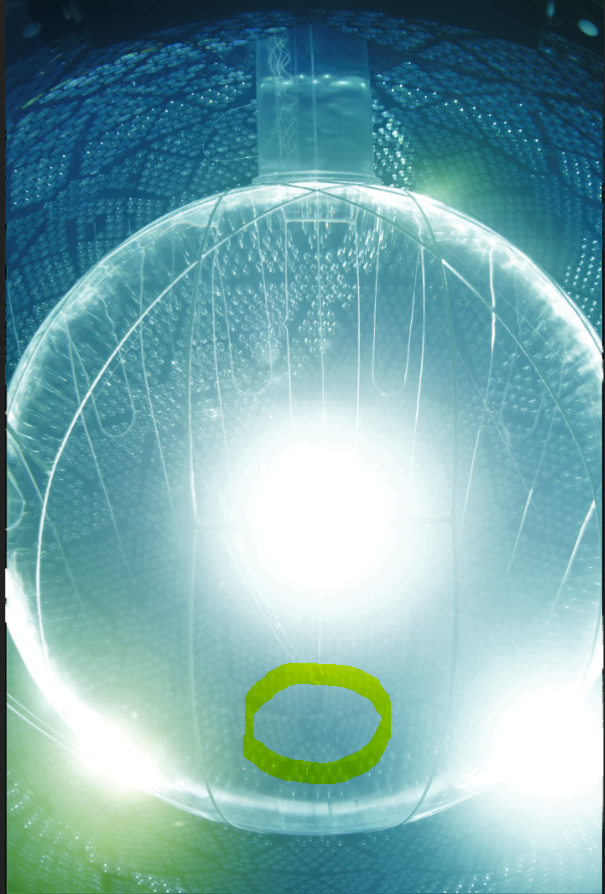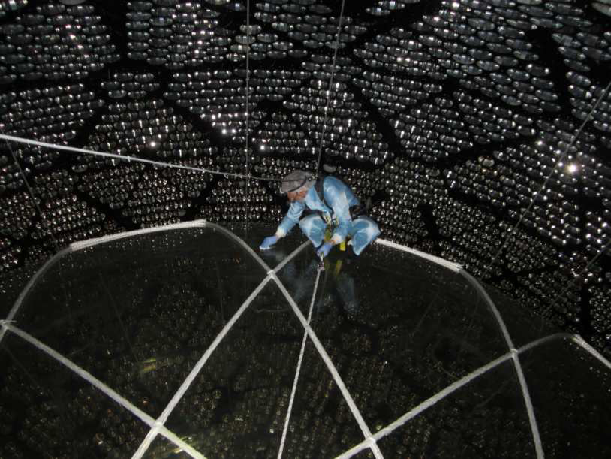Completion of SNO+ Detector Fill

For the last eight years a research team from UC Davis has been working with an international team of scientists to build the Sudbury Neutrino Observatory Plus (SNO+) detector in Northern Ontario. SNO+ is designed to investigate the nature of the neutrino, a small, electrically neutral subatomic particle that has been seen to have unusual properties that set them apart from other known particles. SNO+ was designed to investigate one of the major unknowns in particle physics: are neutrinos like other fundamental particles in that they have an anti-matter partner (e.g. electrons and positrons, protons and anti-protons), or do they break this symmetry and essentially serve as their own anti-particle? This week marked a major milestone in the completion of the filling of the 780 ton device with a mixture of organic liquids that together give a short flash of light when neutrinos or other particles interact. Since the liquid had to be delivered in 20 ton increments, purified, and then taken over 2km underground for injection into a 12-meter diameter acrylic sphere - the filling process took several years to complete.

The picture above shows the filled acrylic sphere surrounded by 10,000 photosensors and floating in water. For scale, the second picture shows the empty sphere with a person on top. (Note: the orange-yellow circle is hand-drawn and indicates the expected small pool of water remaining on the bottom of the sphere).
To celebrate the final filling of the detector, the scientific team made a video of a virtual "toast" to the entirely relevant background dialogue from a famous film. Among the people toasting are UC Davis students Morgan Askins (filling control system software) and Tianqi Zhang (analysis of radioactive backgrounds during the fill), postdoc Leon Pickard (organic liquid optical purity QA co-lead), and professor Robert Svoboda (safety and underground plant design certification). At the end of the short video, the team is congratulated by Arthur McDonald, 2015 winner of the Nobel Prize in physics for his measurements done with an earler version of the SNO+ detector.
SNO+ now plans a decade-long run that will not only to investigate the anti-matter question, but also to make a number of other measurements in neutrino physics and astrophysics.
Published: March 30, 2021, 11:17 am
